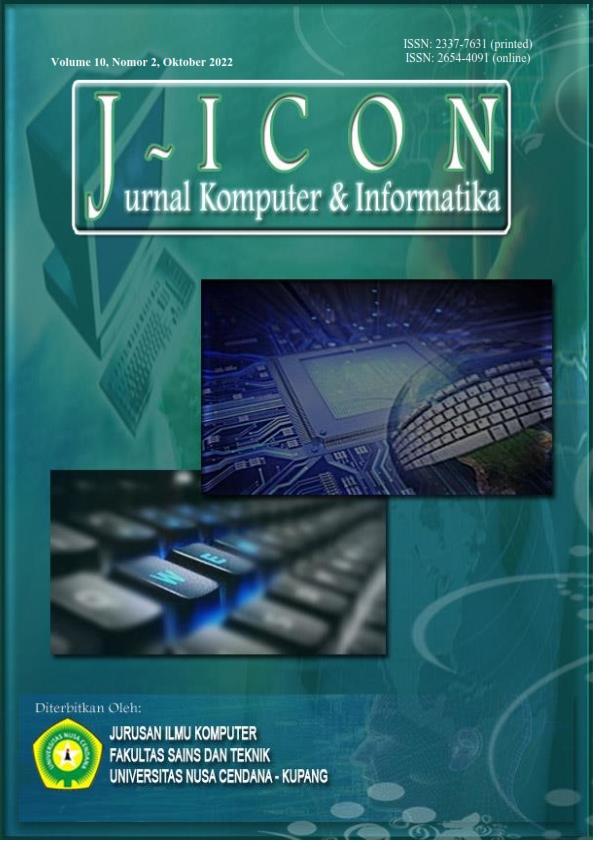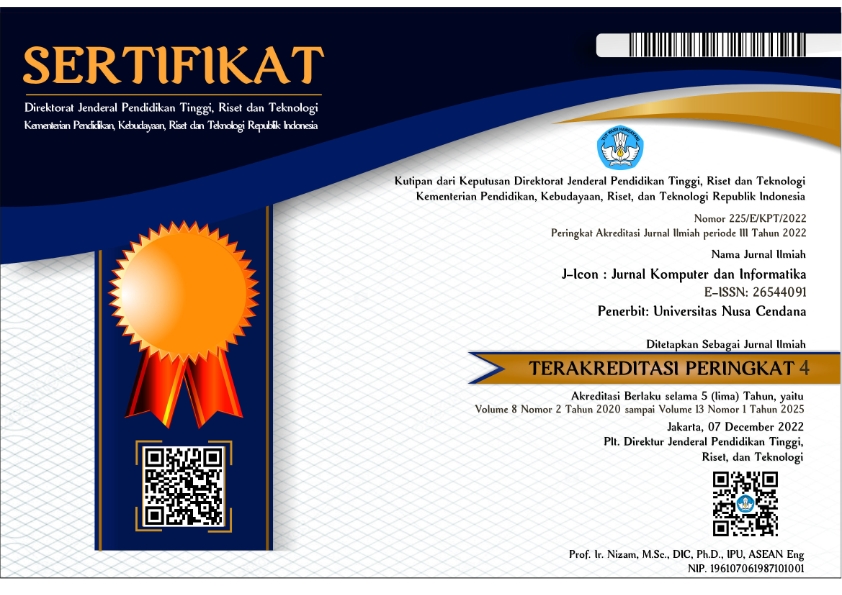APPLICATION OF ELECTRONIC EQUIPMENT CONTROL SYSTEM BASED ON INTERNET OF THINGS IN INFORMATION STUDY PROGRAM OF WEST SULAWESI UNIVERSITY
Abstract
The use of electrical energy, especially in the informatics study program room, is very important because negligence is often found in the use of electrical energy in the informatics study program room. The informatics study program room was the target of research because the location was equipped with electronic fans, lights and wi-fi networks, the head of the informatics study program suggested making a remote control so that it strengthened the background of this research. The purpose of this study is to implement a remote-control system for electronic devices, using nodeMCU and relay as a web server to control the switch online. As well as applying the waterfall method in the design to implementation process, system testing is carried out using the black box method to find out the system is working as expected. From the results of field testing, it was found that the implementation of NodeMCU and relay as a web server to control the switch online makes it easier to control electronic equipment remotely if there is a good internet network.
Downloads
References
F. Firdaus, A. A. Nuryono, and A. Sahroni, “Monitoring dan Kendali Lampu Berbasis Jaringan WiFi untuk Mendukung Smart Home,” ReTII, 2014.
M. F. Nur, M. A. Murti, and C. Setianingsih, “Perancangan Sistem Kendali dan Monitoring Jarak Jauh Peralatan Listrik Rumah Tangga Berbasis Android,” eProceedings of Engineering, vol. 6, no. 1, pp. 125–134, 2019.
R. Y. Endra, A. Cucus, F. N. Affandi, and D. Hermawan, “Implementasi Sistem Kontrol Berbasis Web Pada Smart Room Dengan Menggunakan Konsep Internet Of Things,” Explore: Jurnal Sistem Informasi dan Telematika (Telekomunikasi, Multimedia dan Informatika), vol. 10, no. 2, 2019.
H. Hamdani, J. Budiarto, and S. Hadi, “Sistem Kendali Peralatan Elektronik Rumah Tangga Berbasis Internet Of Things Menggunakan Protokol MQTT,” Jurnal Bumigora Information Technology (BITe), vol. 2, no. 1, pp. 1–11, 2020.
M. S. Novelan and S. Efendi, “Penerapan Internet Of Things Smart Home Menggunakan Nodemcu dan Aplikasi Telegram,” in Prosiding Seminar Nasional Riset Information Science (SENARIS), 2022, vol. 4, no. 2, pp. 183–188.
M. Y. Efendi, “Implementasi Internet of Things Pada Sistem Kendali Lampu Rumah Menggunakan Telegram Messenger Bot Dan Nodemcu Esp 8266,” Global Journal of Computer Science and Technology, 2019.
A. F. Jaya, M. A. Murti, and R. Mayasari, “Monitoring dan Kendali Perangkat pada Ruang Kelas Berbasis Internet Of Things (IOT),” eProceedings of Engineering, vol. 5, no. 1, 2018.
S. Samsugi, “Internet of Things (iot): Sistem Kendali jarak jauh berbasis Arduino dan Modul wifi Esp8266,” ReTII, 2017.
A. Giyartono and P. E. Kresnha, “Aplikasi Android pengendali lampu rumah berbasis mikrokontroler ATmega328,” Prosiding semnastek, 2015.
T. Adiono, R. V. W. Putra, M. Y. Fathany, and W. Adijarto, “Desain sistem rumah cerdas berbasis topologi mesh dan protokol wireless sensor network yang efisien,” INKOM Journal, vol. 9, no. 2, pp. 65–72, 2016.
Copyright (c) 2022 Ahmad Muaz Asiz, Asmawati S, Musyrifah Musyrifah

This work is licensed under a Creative Commons Attribution 4.0 International License.
The author submitting the manuscript must understand and agree that if accepted for publication, authors retain copyright and grant the journal right of first publication with the work simultaneously licensed under a Creative Commons Attribution (CC-BY) 4.0 License that allows others to share the work with an acknowledgment of the work’s authorship and initial publication in this journal.
 Ahmad Muaz Asiz(1*)
Ahmad Muaz Asiz(1*)




